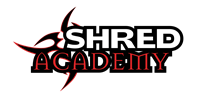Phrasing:
Alternate Influences for the Guitar
By
Zack Uidl
Countless
guitarists around the world find themselves using the same scales,
modes, arpeggios, and licks for all of their lead playing. They
use the same pentatonic scale run, the same triad arpeggio,
use the same modes, and keep everything within the realm of
where they are most comfortable. This becomes very evident with
improvising especially. Many guitarists learn songs or pieces
that were arranged for the guitar and not for any other instrument.
This harmful trap enables the continuation of this problem.
By applying phrases from other instruments such as saxophones,
trumpets, and voices, you will expand your phrasing ability
to capture new emotions and concepts to you guitar playing.
To begin with, we will explore the saxophone and the trumpet.
By learning scales, modes, arpeggios, etc. that are applied
by these musicians, you will learn one of the most over looked
aspects of lead guitar playing, creating space. Many lead guitarists
try to cram as many notes as they can into their phrases and
try to do the wildest stuff they can. This kind of playing does
have its time, but can be overdone quite easily. Saxophones
and trumpet players have to breathe in order to play their phrases.
This forces them to create space because they do, as apposed
to guitarists, have to breathe frequently to play their instrument.
These
musicians also use other scales, modes, and arpeggios that are
not commonly applied to guitar, especially in a rock setting.
If used in a rock context, the music will become completely
original and will stand out from everything else. Examples of
this include bee-bop scales, diminished scales, 7th, 9th, and
11th arpeggios, and variations of pentatonic and blues scales.
Even though the pentatonic and blues scales are commonly played
in rock and blues styles, they are played in different ways
saxophone and trumpet players and this can add very interesting
phrases to your lead playing.Rather
than relying on playing up and down these scales using steps,
as many guitar players will do, they tend to combine steps with
leaps during their playing. For example, when playing an Am
pentatonic scale, the common guitarist will ascend and descend
in the order in which the notes appear in the scale. This playing
is using steps only. When a saxophone player uses the same scale,
they most likely will combine steps, much like the guitarist,
but will incorporate leaps into their phrases that will not
follow the exact note-by-note order of the scale. (I step is
moving from one note to the next while a leap is moving from
one note, skipping one or more notes, and then playing the chosen
note.)Similarly,
vocalists are very good to imitate, as they tend to use very
melodic phrasing as well as fantastic vibrato. Singers do not
tend to use bizarre scales and arpeggios as a jazz horn player
might, but they do a very good job focusing on consonant pitches.
This is very helpful for a developing guitarist because note
choice is one of the most important concepts to learn. By changing
one emphasis on a particular note, the entire phrase can drastically
change. Listen to vocalists that have a great sense of note
choice and of phrasing. There are many great singers whether
they perform jazz, opera, rock, metal, etc. Work with different
styles and find particular singers that are doing with their
voices, what you would like to do with your guitar.
The vibrato usage of the vocalist is probably to most beneficial
aspect to learn. It really helps a guitarist, especially in
finding appropriate places to use for vibrato. To many guitarists
have vibrato that sounds as if a mosquito is flying next to
their ear. Vibrato is supposed to enhance the emotion and expression
in a passage, not prohibit the passage from reaching its potential.
The vibrato that vocalists use is very dramatic. When listening
to your singer(s) of choice, notice where they use their vibrato.
Many times, if a note is being held out, it will gradually build
in intensity. It creates a “voice” for your guitar
solos rather than just a lick. There are guitar solos that sound
like they are singing to its audiences and there are solos that
do not. Which do you prefer? I thought so. Practicing imitating
vocal phrases will allow you to do just that.
In a world where music is highly competitive and looking for
original creations, applying phrasing theories of horn players
and vocalists will allow you to create music that will be a
lot more interesting. Rather than using the same scales and
getting tired of hearing yourself play, stretch yourself by
going beyond the ordinary of guitar playing. The result will
be extraordinary.
Zack Uidl
zack@zackuidl.com
www.zackuidl.com
©
Zack Uidl. All Rights Reserved. Used by Permission.

